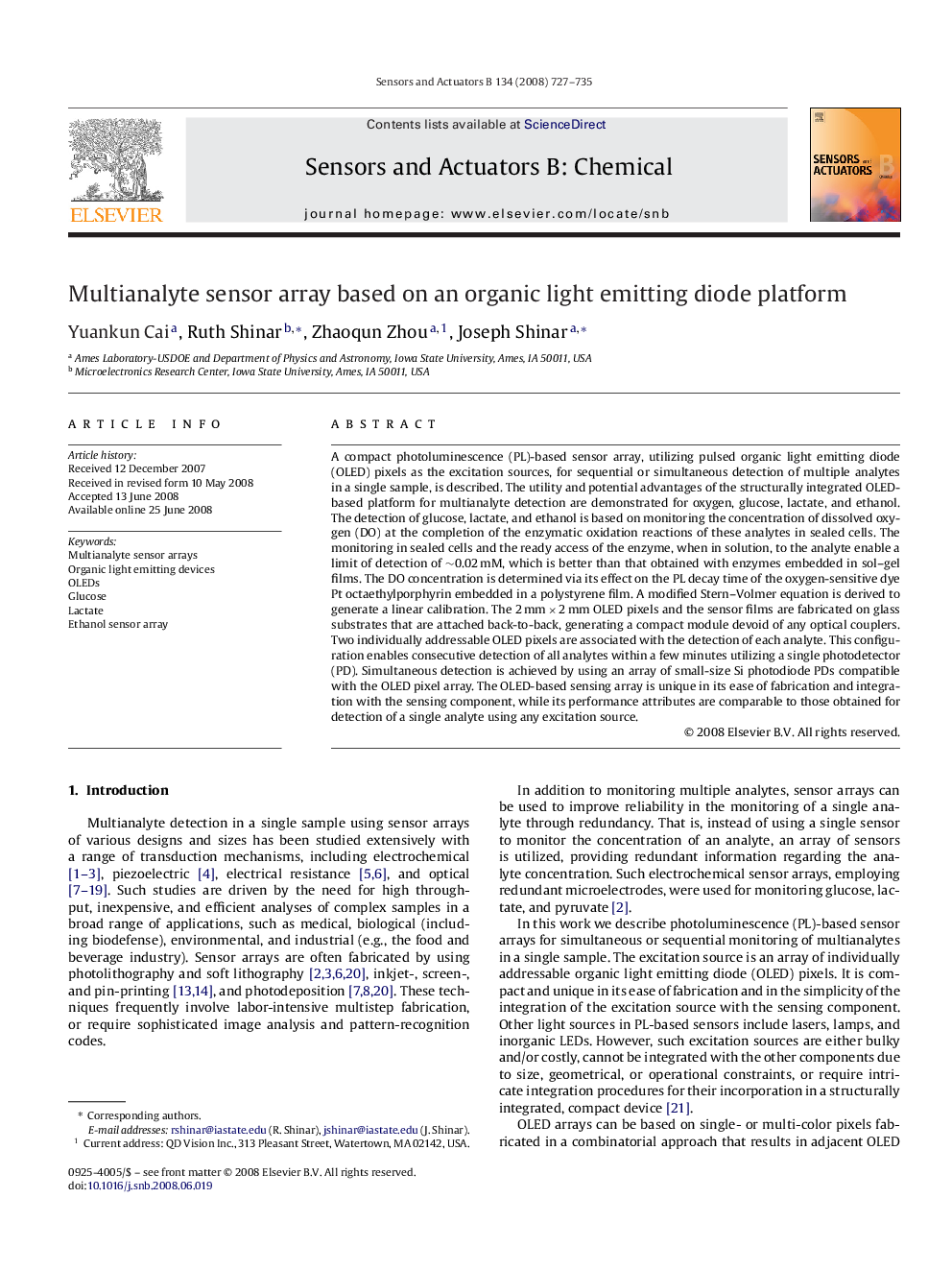| Article ID | Journal | Published Year | Pages | File Type |
|---|---|---|---|---|
| 741236 | Sensors and Actuators B: Chemical | 2008 | 9 Pages |
A compact photoluminescence (PL)-based sensor array, utilizing pulsed organic light emitting diode (OLED) pixels as the excitation sources, for sequential or simultaneous detection of multiple analytes in a single sample, is described. The utility and potential advantages of the structurally integrated OLED-based platform for multianalyte detection are demonstrated for oxygen, glucose, lactate, and ethanol. The detection of glucose, lactate, and ethanol is based on monitoring the concentration of dissolved oxygen (DO) at the completion of the enzymatic oxidation reactions of these analytes in sealed cells. The monitoring in sealed cells and the ready access of the enzyme, when in solution, to the analyte enable a limit of detection of ∼0.02 mM, which is better than that obtained with enzymes embedded in sol–gel films. The DO concentration is determined via its effect on the PL decay time of the oxygen-sensitive dye Pt octaethylporphyrin embedded in a polystyrene film. A modified Stern–Volmer equation is derived to generate a linear calibration. The 2 mm × 2 mm OLED pixels and the sensor films are fabricated on glass substrates that are attached back-to-back, generating a compact module devoid of any optical couplers. Two individually addressable OLED pixels are associated with the detection of each analyte. This configuration enables consecutive detection of all analytes within a few minutes utilizing a single photodetector (PD). Simultaneous detection is achieved by using an array of small-size Si photodiode PDs compatible with the OLED pixel array. The OLED-based sensing array is unique in its ease of fabrication and integration with the sensing component, while its performance attributes are comparable to those obtained for detection of a single analyte using any excitation source.
